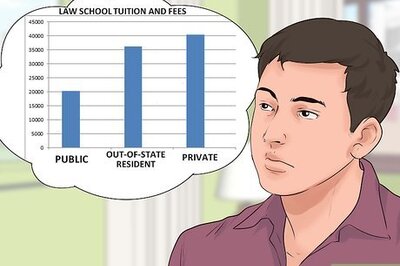
views
Education loan becomes a necessity for most people to move forward in their career path. Like any other finance option, education loan, their quantum and repayment requires thorough planning considering all the aspects. By understanding various repayment options at hand, students can make informed decisions to alleviate the burden on their pockets.
It’s important to note that loan repayment terms can differ based on the country where the loans were obtained.
Also Read: International Higher Education: Discover The Economic Advantages Of Study Abroad Programs
Exploring Repayment Methods:
When it comes to repaying student loans, borrowers have several methods to choose from. These options include standard repayment, extended repayment and income-driven repayment plans. Each approach offers distinct advantages and considerations, allowing students to tailor their repayment strategy to their specific needs.
Popular Repayment Options:
Let’s delve into some of the most commonly considered repayment options:
Standard Repayment Plan:
Under the standard repayment plan, borrowers are required to make fixed monthly payments over a term of up to 10 years. However, the loan term may be shorter depending on the borrowed amount. This plan is typically recommended for individuals seeking to minimize the total interest paid over time.
Graduated Repayment Plan:
The graduated repayment plan begins with smaller monthly instalments that rise steadily over time. This approach assumes that borrowers’ incomes will rise as they progress in their careers. It can be a suitable choice for those expecting an upward trajectory in their earning potential.
Income-Driven Repayment Plan:
Income-driven repayment programs provide an alternative approach that takes borrowers’ discretionary income into account. Monthly payments are calculated based on a percentage of the borrower’s income, typically ranging from 10 to 20 per cent. For individuals facing unemployment or financial hardship, payments can be as low as 0, subject to annual adjustments.
Depending on the loan type, income-driven programs can extend the repayment period to 20 or 25 years. It is crucial to carefully review the specific repayment methods and conditions applicable to the preferred country of residence.

















Comments
0 comment